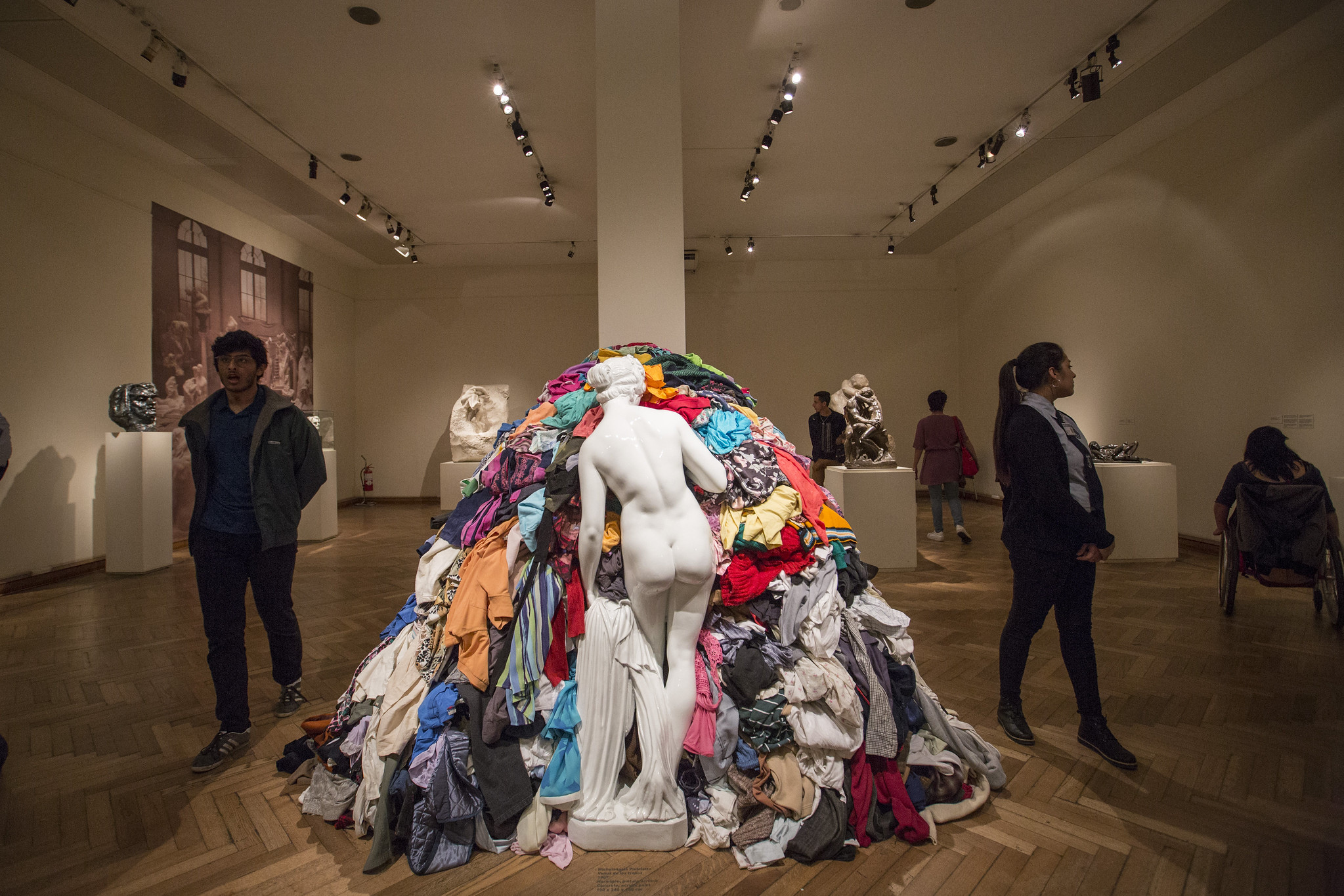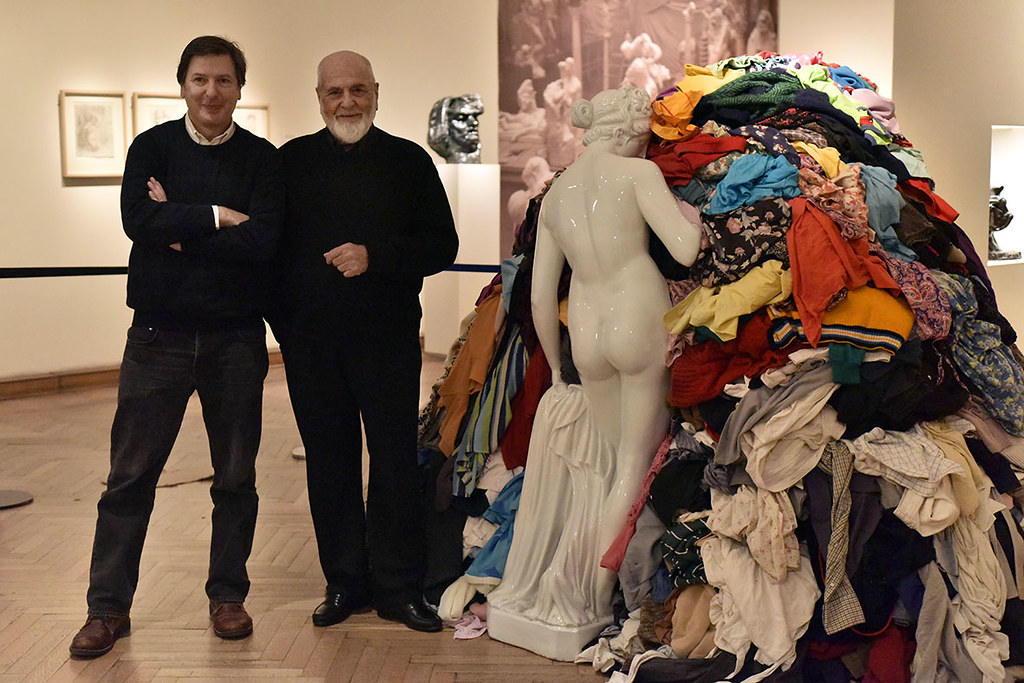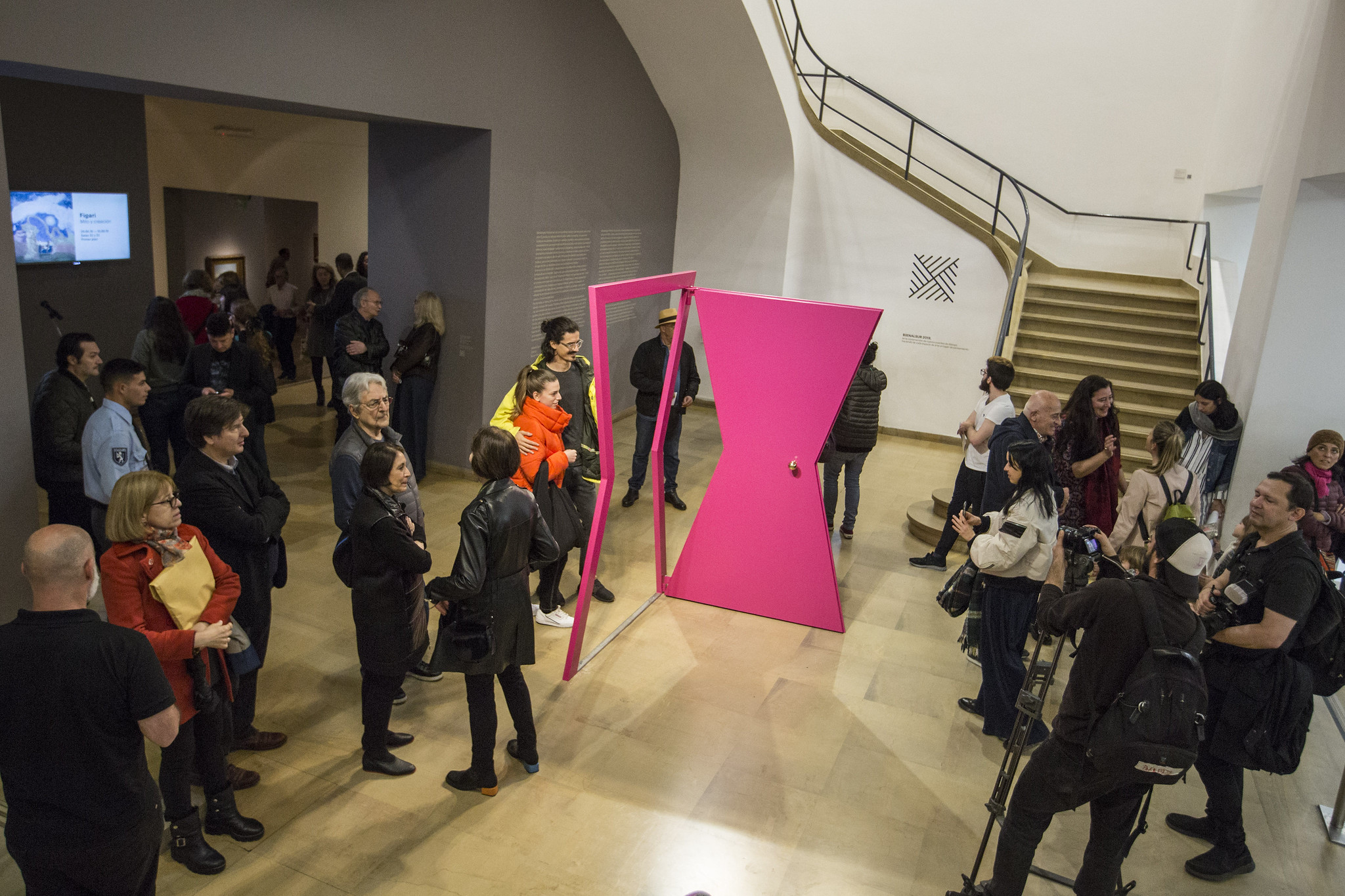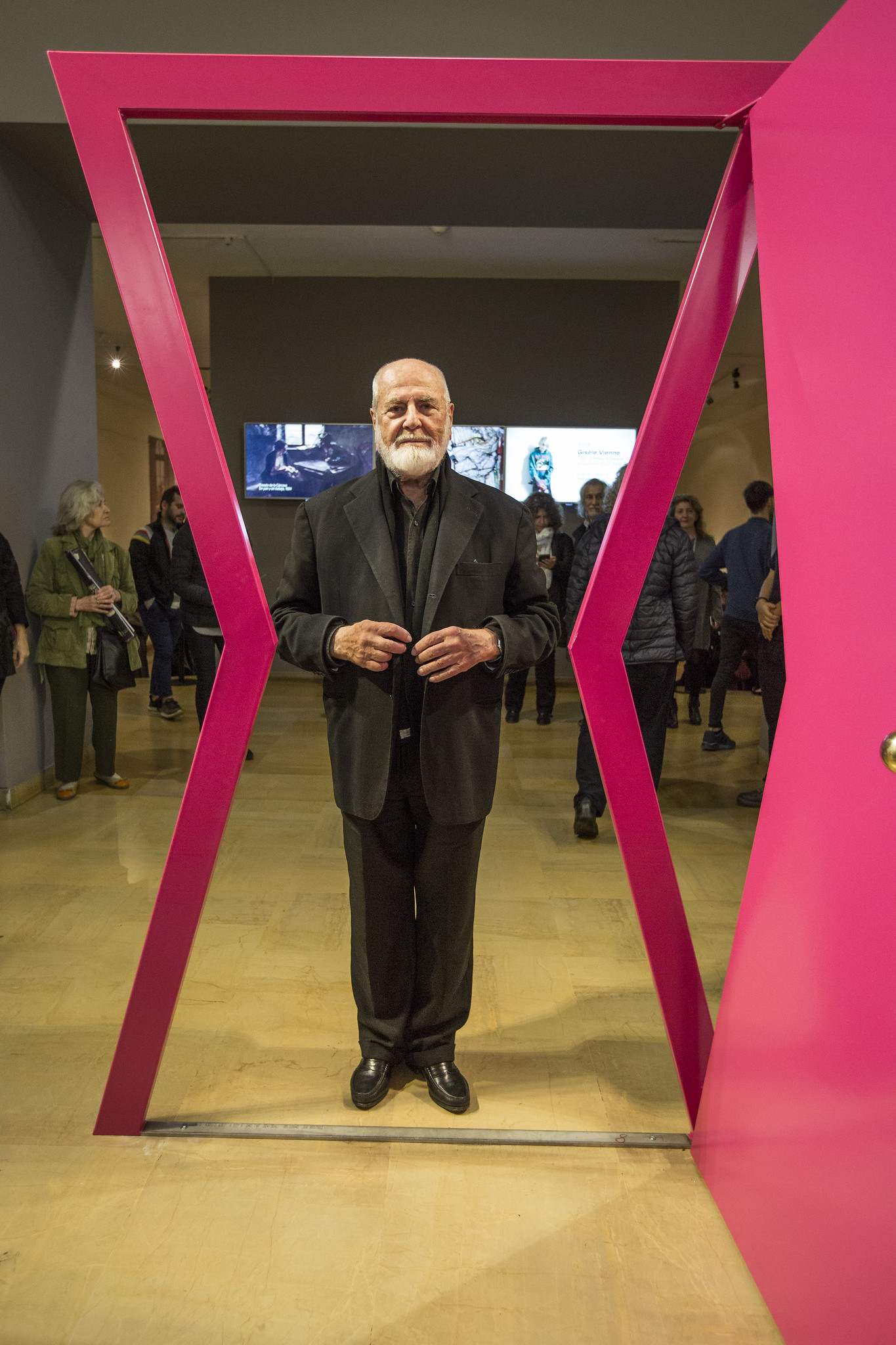Argentinian art
A vast panorama of Argentinean art, including works by its greatest representatives
Browse collection ›Within the framework of BIENALSUR, is exhibiting two representative works by the italian artist.
More information
From June 23, 2019 to Aug. 25, 2019
Central hall
2 works on display
Michelangelo Pistoletto is one of the framers and theoreticians of arte povera, who, in the 1970s, in Italy, devoted himself to critical reflection on the media with which art constructs its various stagings. In opting for humble materials, this conceptual tendency questioned the role that society allotted to art making. His investigation of new languages – performance, happenings, video installations – demonstrates unusual traits, in so far as he prompts a detour in daily life, as well as in our concept of the work of art. This gesture extends to public institutions, which find themselves intervened in by common objects, inciting us to rethink the place art occupies, its social nature, and its inscription in the world.
Within the framework of BIENALSUR, the Museo Nacional de Bellas Artes is exhibiting two representative works by Pistoletto. Segno Arte, a door designed according to the dimensions of the artist‘s body – quoting Leonardo da Vinci's “Vitruvian Man” –, situates man as measure of all things. At the same time, it urges us to desacralize and humanize art. Installed at the entrance to the Museum, it points to a situation – contemplation of art works turned into accessible objects – in which the visitor must intervene actively. It is the opening on to an experience that must be at once common and exceptional.
On the other hand, in La Venus de los trapos [Venus of the Rags], an ironic work of arte povera executed in various museums around the world, Pistoletto sets a sculpture of the goddess in dialogue with a heap of used clothing. In this way, he links the classical concept of the sublime with ordinary life. In confronting the construction of the artistic as propounded by institutions with our day-to-dayness, Pistoletto formulates a crucial question: Where is art rooted? What decides its nature? The incorruptible beauty of classical art and the degradation of clothing through social use together take on a symbolic character: art converses with our bodies and becomes part of common felt experience. The equality among humans that animates his worldview is thereby given its due prominence.
Andrés Duprat
Director
Museo Nacional de Bellas Artes
---
Imagen: Venere degli stracci, 1967. Courtesy: GALLERIA CONTINUA, San Gimignano / Beijing / Les Moulins / Habana. Photo by: Oak Taylor-Smith




A vast panorama of Argentinean art, including works by its greatest representatives
Browse collection ›Get to know the great works on exhibit, and more
Browse collection ›